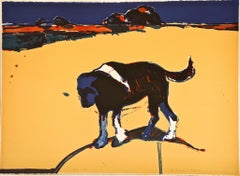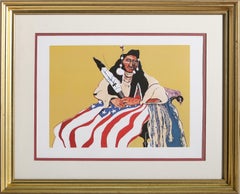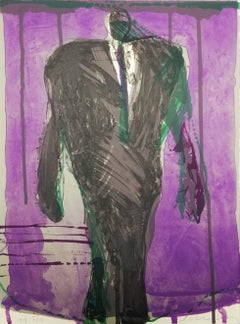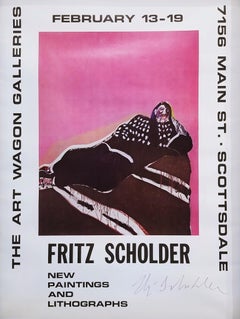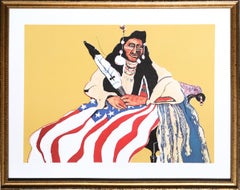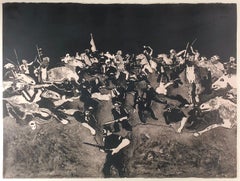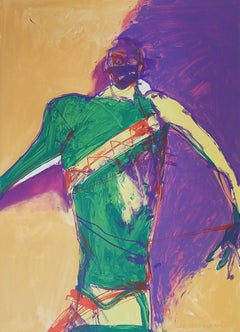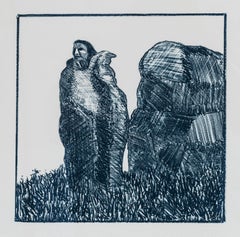Fritz Scholder Lithograph
Late 20th Century Contemporary Prints and Multiples
Lithograph
1970s Pop Art Figurative Prints
Lithograph, Offset
1980s Expressionist Figurative Prints
Lithograph
1970s Expressionist Figurative Prints
Lithograph, Offset
1970s American Modern Figurative Prints
Lithograph
1970s American Modern Figurative Prints
Paper, Lithograph
Recent Sales
1980s Abstract Figurative Prints
Lithograph
1970s Modern Figurative Prints
Lithograph
1980s Post-War More Prints
Lithograph
1980s Post-War More Prints
Lithograph
1980s Post-War More Prints
Lithograph
1980s Post-War More Prints
Lithograph
Vintage 1980s American Mid-Century Modern Prints
Paint
20th Century American Contemporary Art
20th Century Abstract Abstract Prints
Lithograph
1970s American Realist Portrait Prints
Lithograph
1970s Abstract Expressionist Figurative Prints
Lithograph
1970s American Modern Figurative Prints
Archival Paper, Lithograph
Late 20th Century Contemporary Figurative Prints
Lithograph
1980s Contemporary Figurative Prints
Monoprint
1970s Expressionist Portrait Prints
Lithograph
Late 20th Century American Prints
1970s Pop Art Figurative Prints
Offset, Lithograph
Late 20th Century Figurative Prints
Paper, Ink
Late 20th Century American Prints
Paper
Vintage 1970s Prints
Paper
Vintage 1970s American Mid-Century Modern Paintings
Paper
1980s Expressionist Portrait Prints
Lithograph
1970s Expressionist Figurative Prints
Lithograph
1970s Expressionist Portrait Prints
Lithograph, Offset
1970s Pop Art Portrait Prints
Lithograph
2010s Contemporary Figurative Prints
Lithograph
Late 20th Century Contemporary Figurative Prints
Lithograph
1980s Post-War More Prints
Lithograph
1980s Post-War More Prints
Lithograph
1980s Post-War More Prints
Lithograph
1980s Post-War More Prints
Lithograph
21st Century and Contemporary Figurative Prints
Lithograph
People Also Browsed
Early 20th Century Persian Rustic Persian Rugs
Wool
2010s Abstract Abstract Paintings
Oil
20th Century French Neoclassical Figurative Sculptures
Crystal, Bronze
Mid-20th Century Dutch Chinoiserie Vases
Ceramic, Earthenware
1950s Minimalist Abstract Prints
Lithograph
21st Century and Contemporary Table Lamps
Steel
2010s Spanish Natural Specimens
Pyrite
Mid-20th Century Spanish Spanish Colonial Wall Mirrors
Iron
Antique 18th Century French Folk Art Trunks and Luggage
Metal
Vintage 1960s Italian Mid-Century Modern Decorative Bowls
Ceramic
Vintage 1950s Finnish Mid-Century Modern Sofas
Fabric, Wood
1970s Abstract Geometric Abstract Prints
Screen
Vintage 1960s Italian Mid-Century Modern Armchairs
Leather, Fiberglass
1990s Japanese Bohemian Books
Paper
Mid-20th Century Spanish Hollywood Regency Flush Mount
Bronze
Mid-20th Century Guatemalan Folk Art Trunks and Luggage
Pine
Fritz Scholder Lithograph For Sale on 1stDibs
How Much is a Fritz Scholder Lithograph?
Fritz Scholder for sale on 1stDibs
Fritz Scholder was born in Breckenridge, Minnesota, on October 6, 1937. Scholder was a prominent Indian portrait, figure and genre painter in Arizona. His father was part Indian and Fritz Scholder chose to focus his artwork on this part of his lineage and to express both an appreciation and disdain for Indian customs, traditions and daily existence. In his childhood, where he was the fifth sibling in a primarily German family, he showed a passion for collecting, which has dominated his largely autobiographical art. He studied at the University of Kansas, Wisconsin State University and with Wayne Thiebaud at Sacramento College in California. He earned a master of fine arts degree from the University of Arizona. A long-time resident of Scottsdale, Arizona, he has filled several artist-in-residence positions including Dartmouth College and the Oklahoma Summer Arts Institute. In his work, he frequently showed the harsh, realistic side of Indians' lives and deaths including the effects of alcohol and other dissipations, but some of his depictions are humorous such as Indians on horseback carrying umbrellas. His brush-work is generally swift, and the tone often somber and surreal. A major influence on his work was the contemporary British artist, Francis Bacon, from whom Scholder adapted ironic distortions into his canvases. In Scottsdale, he lived in an adobe-walled oasis of palm trees and oleander, amid skulls and skeletons. In the garden, several of Mr. Scholder's sculptures feature skull-like heads. In the library, an 18th-century skull engraved with witchcraft symbols shared shelf space with books printed before 1500. And the porch had been converted into a skull room, complete with Mexican Day of the Dead paraphernalia that spill from cabinets and rest on shelves and antique chairs. In a New York Times interview of August 12, 2001, Scholder said that despite the death-related items with which he surrounds himself, “I consider myself a natural optimist which might be surprising because I like the dark side of things. That's simply because of intellectual curiosity. I celebrate each day. I truly wake up happy every morning”. In appearance, he was rather a heavy set with shoulder-length hair and a radiant smile. He was shy and idiosyncratic including the driving of a gold 1979 Rolls-Royce fitted with tinted windows. His career includes etchings, aquatints, lithographs, monotypes, photographs, collages, sculptures and mixed media, but he is best known for his paintings. He was married to Lisa Markgraf Fisher and had one son. In his artwork, death had been a constant preoccupation for Scholder. He said, “Death is completely fearful, terrible violence that intrudes into what people believe. It's not what I want to think about, but it's there and is either the worst practical joke in the creation or the fault of whoever made all this up”. Fritz Scholder died February 10, 2005, at age 67 in Scottsdale, and a memorial service was held at the Heard Museum in Phoenix.
Finding the Right Prints-works-on-paper for You
Decorating with fine art prints — whether they’re figurative prints, abstract prints or another variety — has always been a practical way of bringing a space to life as well as bringing works by an artist you love into your home.
Pursued in the 1960s and ’70s, largely by Pop artists drawn to its associations with mass production, advertising, packaging and seriality, as well as those challenging the primacy of the Abstract Expressionist brushstroke, printmaking was embraced in the 1980s by painters and conceptual artists ranging from David Salle and Elizabeth Murray to Adrian Piper and Sherrie Levine.
Printmaking is the transfer of an image from one surface to another. An artist takes a material like stone, metal, wood or wax, carves, incises, draws or otherwise marks it with an image, inks or paints it and then transfers the image to a piece of paper or other material.
Fine art prints are frequently confused with their more commercial counterparts. After all, our closest connection to the printed image is through mass-produced newspapers, magazines and books, and many people don’t realize that even though prints are editions, they start with an original image created by an artist with the intent of reproducing it in a small batch. Fine art prints are created in strictly limited editions — 20 or 30 or maybe 50 — and are always based on an image created specifically to be made into an edition.
Many people think of revered Dutch artist Rembrandt as a painter but may not know that he was a printmaker as well. His prints have been preserved in time along with the work of other celebrated printmakers such as Pablo Picasso, Salvador Dalí and Andy Warhol. These fine art prints are still highly sought after by collectors.
“It’s another tool in the artist’s toolbox, just like painting or sculpture or anything else that an artist uses in the service of mark making or expressing him- or herself,” says International Fine Print Dealers Association (IFPDA) vice president Betsy Senior, of New York’s Betsy Senior Fine Art, Inc.
Because artist’s editions tend to be more affordable and available than his or her unique works, they’re more accessible and can be a great opportunity to bring a variety of colors, textures and shapes into a space.
For tight corners, select small fine art prints as opposed to the oversized bold piece you’ll hang as a focal point in the dining area. But be careful not to choose something that is too big for your space. And feel free to lean into it if need be — not every work needs picture-hanging hooks. Leaning a larger fine art print against the wall behind a bookcase can add a stylish installation-type dynamic to your living room. (Read more about how to arrange wall art here.)
Find fine art prints for sale on 1stDibs today.
